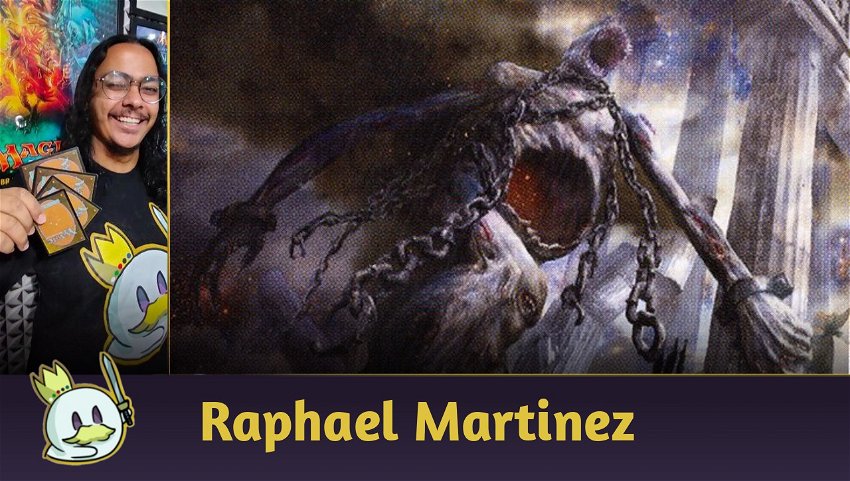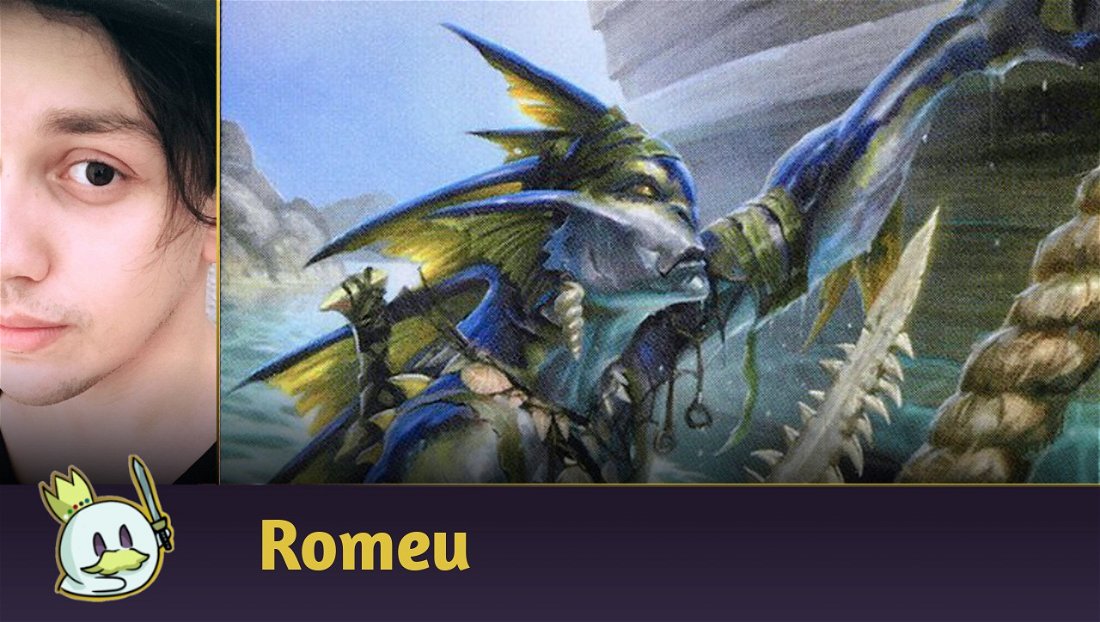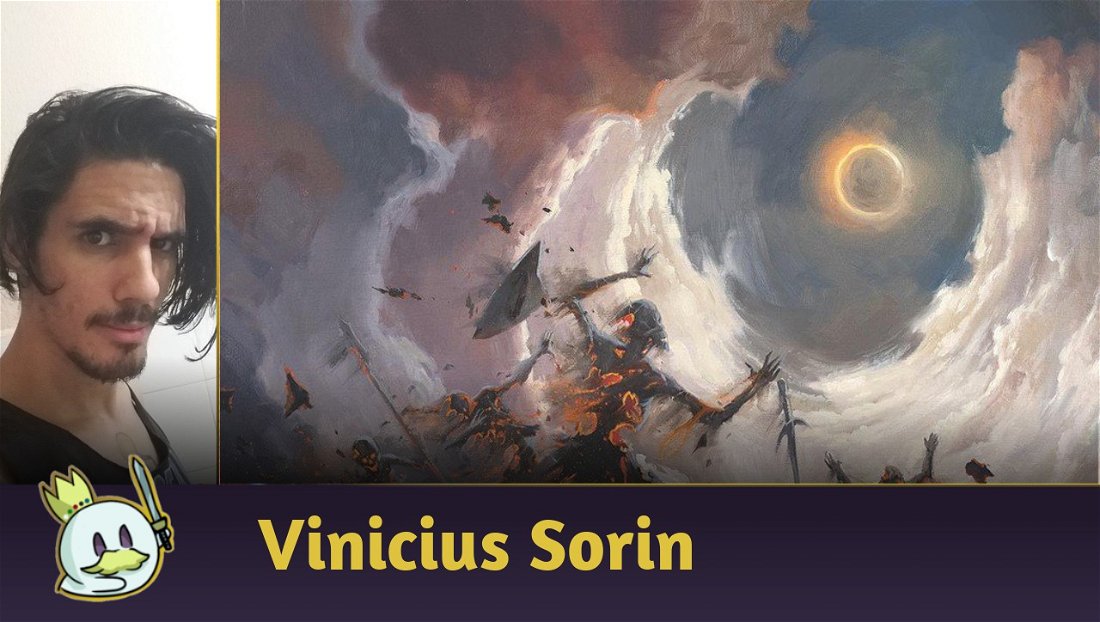About the Deck
Rakdos Midrange is a variation of the old Rakdos Kroxa, which used Lurrus of the Dream-Den + Kroxa, Titan of Death's Hunger to loop into a card advantage machine.
This new version came after Lurrus of the Dream-Den was banned, taking advantage of high-impact cards when entering the battlefield such as Graveyard Trespasser and Bonecrusher Giant, which makes favorable 2-for-1 trades, either forcing a discard from the opponent's hand trying to kill Graveyard Trespasser, or dealing two damage with Bonecrusher Giant and then casting it as a creature.
But of course, this version still runs Kroxa, Titan of Death's Hunger, which provides an excellent clock and a great Card Advantage.

Following this line, some versions have Planeswalkers in their game plan such as Chandra, Torch of Defiance and Sorin the Mirthless, being able to make many favorable trades, considering that it is a deck with cards that individually are good. This deck's style is very reminiscent of other classic Magic decks, such as Modern's Jund.

When playing with Rakdos, it is necessary to keep in mind that your cards will always make favorable exchanges for you or, at the very least, one-for-one trades with your opponents' creatures and throughout the game you will end up managing to "win" cards always being ahead in cards in hand, and with that, you will be able to finish the game.
Mulligan and Stances
The version of the deck that we will cover in the article is more focused on creatures, mainly using Fable of the Mirror-Breaker, a card that, in itself, is always a favorable trade for us. So, our focus here is on value threats, rather than using the Planeswalker strategy.
Remember, there is no such thing as a perfect build, you can play the way you want and/or better adapt to your Metagame. You can build a version that's a bit more Planeswalker-oriented or more creature-focused, like the one we're using.
The deck, like a good Midrange, can behave in two ways throughout the matches. It is possible to use your discards and removals as a control at the beginning of the game and, from then on, use your creatures as threats — for example Graveyard Trespasser or Bonecrusher Giant, which can end the game by hitting the opponent for a few turns.
When you're playing against a more Control-focused deck, you should use a more aggressive stance, always making your creatures a threat as soon as possible, dealing damage from the start of the game. Bloodtithe Harvester is very useful here, in addition to Bonecrusher Giant's Stomp on the opponent's life, and then casting it trying to close the game faster, since the control will be the opponent — soon they will have a better late game than yours.
The good thing about the Rakdos version is that it is possible to have favorable to even matchups against all archetypes of the format, as it has removals, discards, graveyard exile and even artifact hate in its main deck.
Sideboard against Main Matchups
Lotus Field
Against Lotus, our Game 1 is basically slotting in a threat on early turns and a Thoughtseize or Duress on turn three or four, trying to take a key card out of the opponent's hand.
Our deck doesn't have as many threats that can win the game before our opponent can combo, so we should take a more aggressive stance as soon as possible. If we can escape Kroxa, Titan of Death's Hunger in turn four, it could be an excellent chance for victory.
Side in

Side out

The versatility comes from our sideboard, where we exchange removals for discards, and so we can delay our opponent, gaining the necessary time to win the game.
Seek hands with Duress or Thoughtseize on turn 1, allied with another key card like Necromentia or Go Blank, then make threats. Note that the stance changes from game one to post-side.
Azorius Control
Against Azorius Control, we must make the most of our cards, always creating unfavorable trades for our opponent.
To that end, play carefully around your opponents' counterspells, especially Censor, as our top cards such as Graveyard Trespasser, Bonecrusher Giant and Fable of the Mirror-Breaker, should resolve to make the most of our resources.
Another relevant card in Game 1 is Kroxa, Titan of Death's Hunger, which has good recursion, but remember to take exile removals out of your opponent's hand before playing it from your graveyard.
A point to consider is that the Planeswalker version is slightly better in this matchup.
Side in

Side out

On the post-side, we've further improved Card Advantage with Go Blank and changed creature removals to Planeswalker removals, hence the importance of Fry and Noxious Grasp to resolve Teferi, Hero of Dominaria and The Wandering Emperor.
The advantage of the game is that one or two creatures on the battlefield are enough, so you don't value their Supreme Verdict
Remember to use Den of the Bugbear only at opportune times, as March of Otherworldly Light removes it with just one mana.
Naya Winota
Against Winota we must adopt the Control stance, using our removals early on small creatures and playing our threats later.
Our opponent's top card is Esika's Chariot, and our best answer are discard spells. That's why I don't recommend doing the discard on turn one, but waiting a turn before the opponent's four mana.
Don't skimp on Fatal Push — ideally remove mana dorks like Elvish Mystic and Llanowar Elves from the opponent. After a favorable situation at the table, we make a threat and try to finish the game.
Side in

Side out

In the post-side game, the posture doesn't change, the difference is that we increased our removals, and now we have an adequate answer against our opponents' tokens, Hidetsugu Consumes Allm which also kills the dorks.
Another important card is Kalitas, Traitor of Ghet, which turns our removals into more threats to our side. Try not to let the opponent ramp up, as Tovolar's Huntmaster is a powerful threat.
Mono-Red Burn
In this game, we must be the Control, so we must not compete against our opponents, but try to prevent them from advancing their initial game plan, dragging the game to later turns, where you can finish them off.
Make the best use of Thoughtseize in game 1, which serve to take Chandra, Dressed to Kill, or as discard fodder to Fable of the Mirror-Breaker.
Kalitas, Traitor of Ghet and Graveyard Trespasser serve to gain some extra life, which slows down our opponents' clock. Always kill creatures with prowess, such as Monastery Swiftspear and Soul-Scar Mage.
Side in

Side out

After the sideboard, we play without Thoughtseize. So, our discards are Duress, which serve to discard our opponent's main Planeswalkers, such as Chandra, Torch of Defiance and Chandra, Dressed to Kill.
Go Blank serves, especially on the play, to reduce these large threats and improve our card advantage, while removing the small creatures with Bonecrusher Giant and Fatal Push.
The match should stretch a bit, as on the side the opponent comes with better removals, like Lava Coil and Redcap Melee to remove our big creatures, so always leave Kalitas, Traitor of Ghet for last, after baiting their removals into other creatures.
Rakdos Midrange
At the mirror match, our key cards are discards to deal with Kalitas, Traitor of Ghet and Graveyard Trespasser, which are fundamental on the mirror, as they generate a lot of value over time.
If the opponent runs Planeswalkers, save Dreadbore and don't use them on creatures — try to trade them during combat and end the game with Den of the Bugbear and Hive of the Eye Tyrant.
Side in

Side out

In post-side matchups we should take advantage of the card advantage even more, so we removed Duress that discards only one card, to put Go Blank to remove high-cost cards like Kalitas, Traitor of Ghet and the Planeswalkers. Try to use Kolaghan's Command as recursion and discard, generating as much value as possible.
Gameplay
Conclusion
That's all for today! If you have any questions about the deck, I'm available in the comments. Until the next time!















— Comments 0
, Reactions 1
Be the first to comment